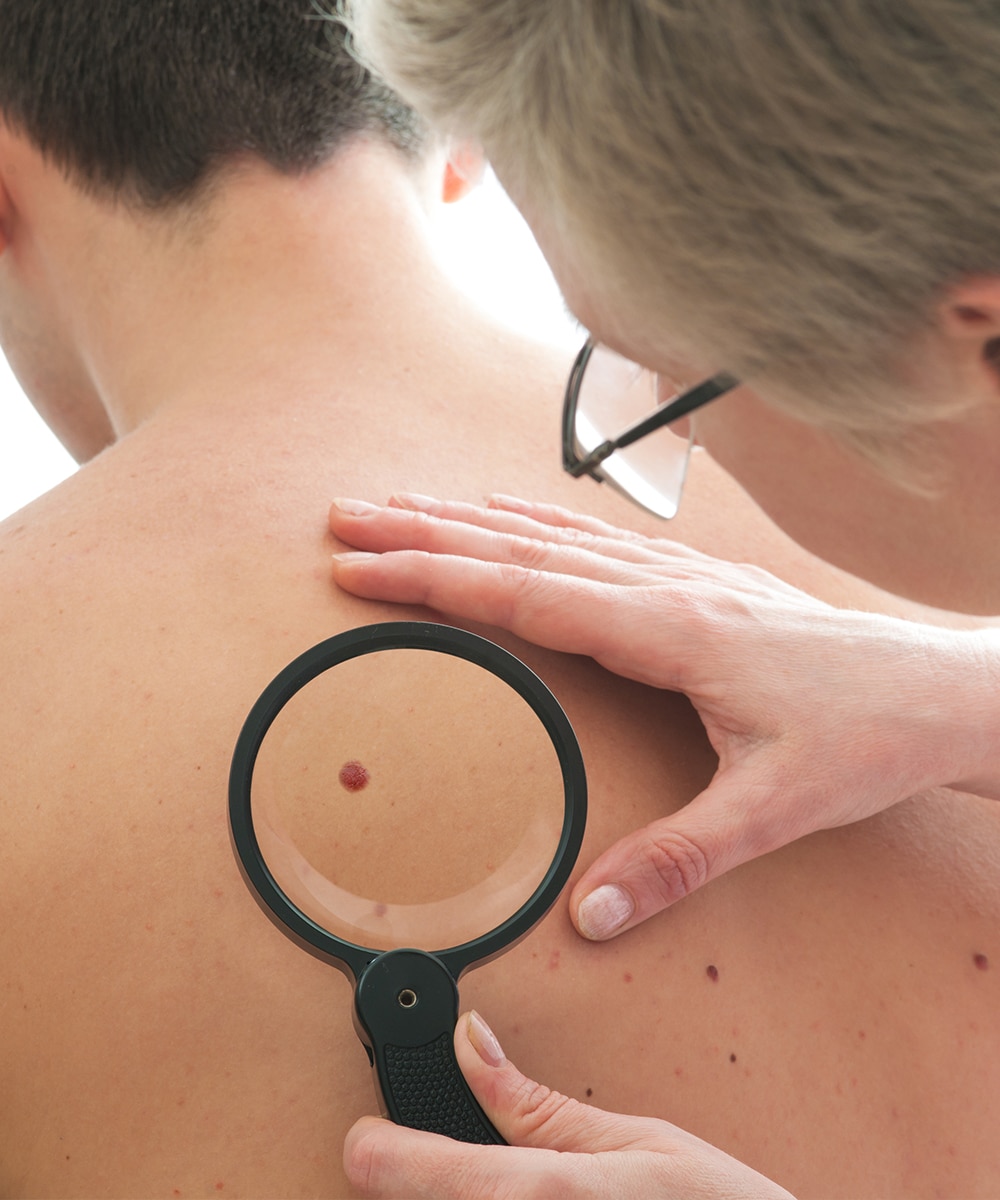Moles and Benign Nevi Treatment
Visit Rodgers Dermatology for your Mole and Benign Nevi skin exams and removal.
Moles, also called nevi, are very common. Almost every adult has a few, but people with fair skin often tend to have many more. Most moles will appear during childhood or adolescence, but some moles can appear in adults up to age 35 or 40. Some moles will darken or lighten with time, or increase in size, especially in children as they grow.
In adults, new moles or changes to existing moles could be a sign of melanoma. If you see a mole or other spot that is growing, itching, bleeding, or changing in any way, you should make an appointment to have it checked. Also, anyone with 50 or more moles on their body should have yearly skin exams as their risk of melanoma is increased.

Moles (Nevi)
Moles are brown or black growths, usually round or oval, that can appear anywhere on the skin. They can be rough or smooth, flat or raised, single or in multiples. They occur when cells that are responsible for skin pigmentation, known as melanocytes, grow in clusters instead of being spread out across the skin. Generally, moles are less than one-quarter inch in size. Most moles appear by the age of 20, although some moles may appear later in life. Most adults have between 10 and 40 moles. Because they last about 50 years, moles may disappear by themselves over time.
Most moles are harmless, but a change in size, shape, color or texture could be indicative of a cancerous growth. Moles that have a higher-than-average chance of becoming cancerous include:
Higher frequency of moles
People with 50 or more moles are at a greater risk for developing a skin cancer.
In some cases, abnormal moles may become painful, itchy, scaly or bleed. It’s important to keep an eye on your moles so that you can catch any changes early. We recommend doing a visual check of your body monthly, including all areas that don’t have sun exposure (such as the scalp, armpits or bottoms of feet).
Use the American Academy of Dermatology’s ABCDEs as a guide for assessing whether or not a mole may be becoming cancerous:
Asymmetry: Half the mole does not match the other half in size, shape or color.
Border: The edges of the mole are irregular or blurred.
Color: The mole is not the same color throughout.
Diameter: The mole is larger than one-quarter inch in size.
Elevation: The mole becomes elevated or raised from the skin.
If any of these conditions occur, please make an appointment to see one of our dermatologists right away. The doctor may do a biopsy of the mole to determine if it is or isn’t cancerous and/or may surgically remove it.
Schedule an Appointment with Dr. Rodgers for Mole and Benign Nevi treatment in Frisco, TX
Rodgers Dermatology is one of the leading providers for mole and benign nevi removal in the Frisco area. If you are searching for effective and easy mole or benign nevi removal in Frisco, Plano, McKinney, Allen, Prosper, Celina, or The Colony, please contact our office to schedule a consultation
